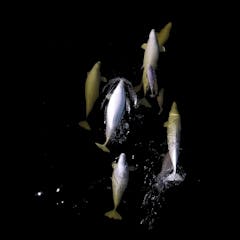
Articles on Drones
Displaying 21 - 40 of 275 articles

Drone use has increased dramatically, but what effect will this have on our endangered shorebirds? New research shows the eastern curlew is easily startled, prompting others to take flight.

Nasa is taking reports of unidentified objects seriously, but it hasn’t found aliens yet.

Can one invention revolutionise propellers, whose basic design has been around for over 100 years? Not so fast.

Drone strikes in Moscow are just one sign of an intensifying air war ahead of Ukraine’s offensive.

As drone strikes become a more routine part of warfare, a set of rules or standards that can help determine how they are used in warfare is needed, writes a former US diplomat.

It was the trip of a lifetime for an Australian research team studying moss in Antarctica. After two months at Casey Station they returned with great videos and loads of data for further analysis.

As the drone market continues to expand, a set of rules or standards that can help determine how they are used in warfare is needed, writes a former US diplomat.

Over the years Australia has been quick to point the finger at China – most recently in relation to DJI drones. Instead, we should look closely at our own tech security policies.

The drone ‘attack’ on the Kremlin remains shrouded in mystery. Here are some of the possible explanations.

As Russia’s war in Ukraine illustrates, the use of lethal automated weapons, or LAWS, can always be justified. Their ability to desensitize their users from the act of killing, however, shouldn’t be.

A selection of our coverage of the conflict over the past fortnight.

Shocking scenes of scorched koalas in the 2019-20 bushfires sparked research into cultural burns for wildlife. A two-year study on the world’s second-largest sand island suggests it’s the way to go.

International law states that states have to operate ‘due regard’ for the right of nations to fly drones above international waters. Washington claims Russia violated this standard in incident.

Drones are a new technology that help researchers observe and record whale behaviours from a distance. But if the drones are flown too low, they change the whales’ behaviour.

The war in Ukraine has dramatically increased the use of drones in warfare, from repurposed consumer quadcopters to flying bombs to remotely piloted warplanes.

A year ago, the Ukrainian military was largely equipped with Soviet-era weapons. It has since seen an influx of high-tech weapons. But it’s less what than how that’s made a difference.

The technology exists to build autonomous weapons. How well they would work and whether they could be adequately controlled are unknown. The Ukraine war has only turned up the pressure.

New weapons and technologies have been used on both sides of the conflict. Donors need to be responsible for testing these weapons first to ensure they are in compliance with the laws of war.

With electricity in Ukraine constantly disrupted by Russian attacks, the Ukrainian population faces a difficult choice — to remain in the country under such conditions, or flee abroad.

Ukraine’s morale remains high, despite months of bombardment and drone strikes.





